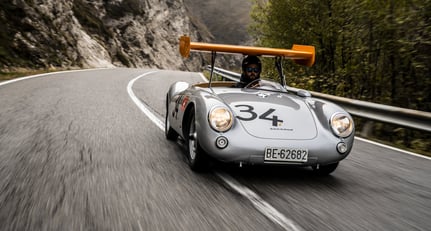The gossip in the paddock ahead of the Nürburgring 1,000km sports-car race in 1956 did not concern the ambitious four-car entries from the Works Ferrari and Maserati teams fresh from their dominant performances in the Mille Miglia, nor the roll call of star drivers assembled to drive for them, which included Juan Manuel Fangio, Phil Hill and Stirling Moss, to name but a few.
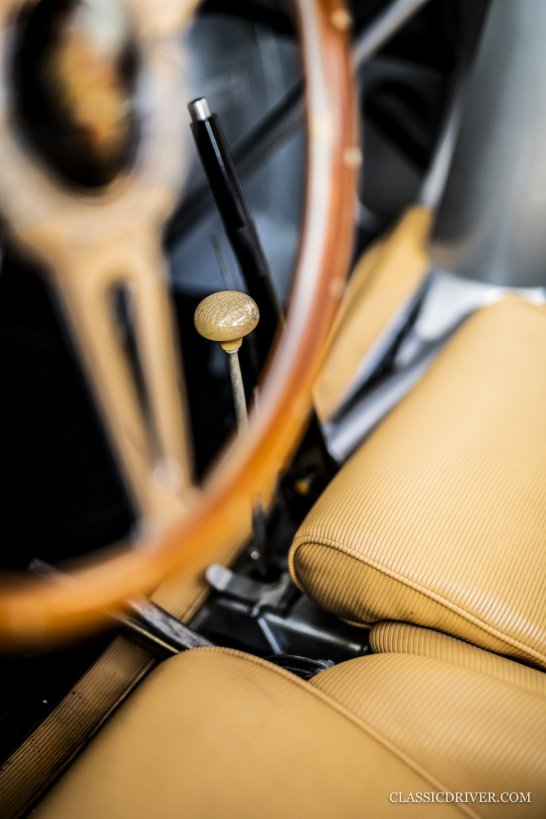
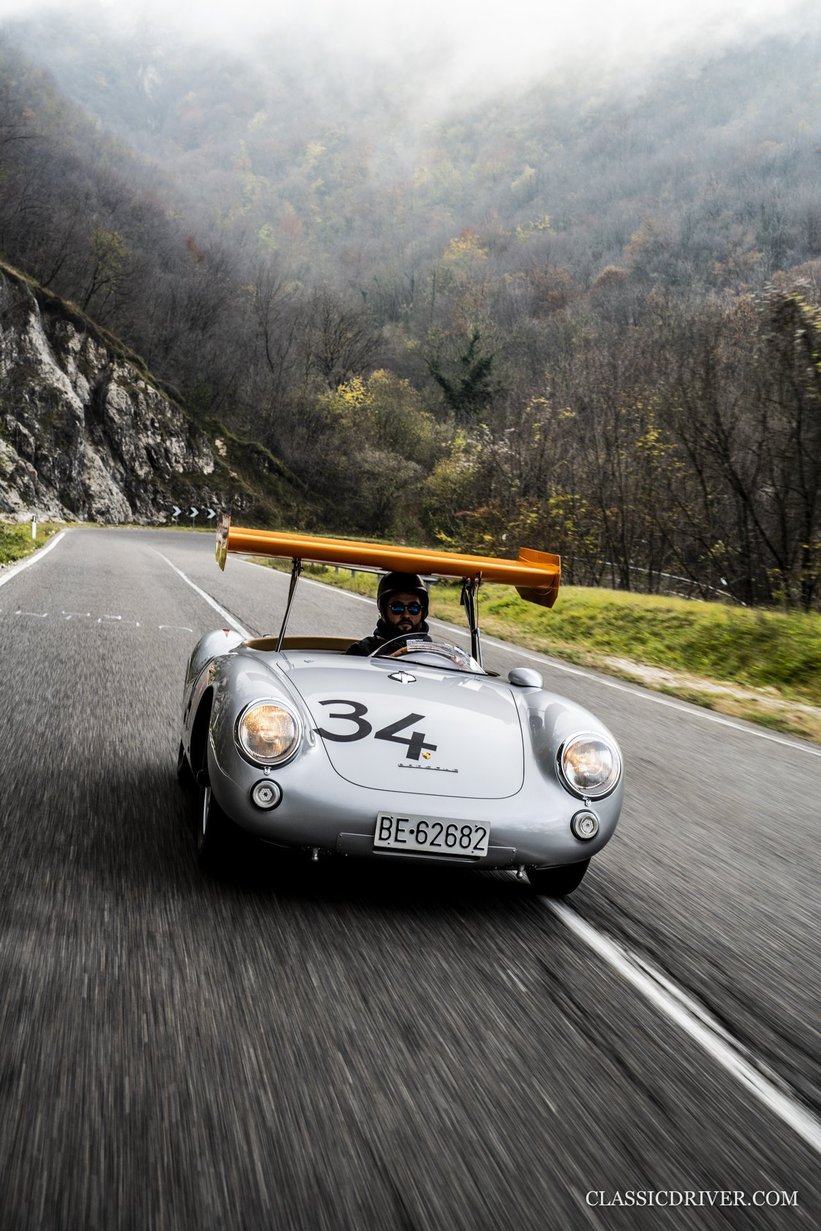
Nope, the real fuss surrounded the Porsche 550 RS Spyder entered by the 22-year-old German-born driver-slash-engineer Michael May and his brother Pierre or, more specifically, the comically large inverted aerofoil shadowing the car’s open cockpit. See, in qualifying, May’s Porsche with its unusual contraption lapped the technical 14.2-mile circuit a staggering four seconds quicker than the factory’s own 550 Spyders, which, to add insult to injury, had just been given a comprehensive refresh.
As unusual as the Porsche appeared, there was carefully crafted method behind the madness. A graduate of mechanical engineering at Zurich Technical University, May expertly recognised that an inverted wing wouldn’t only increase stability, but it would also generate downforce. He mounted the aerofoil in the middle of the mid-engined chassis would maximise strength while lowering the car’s centre of gravity.
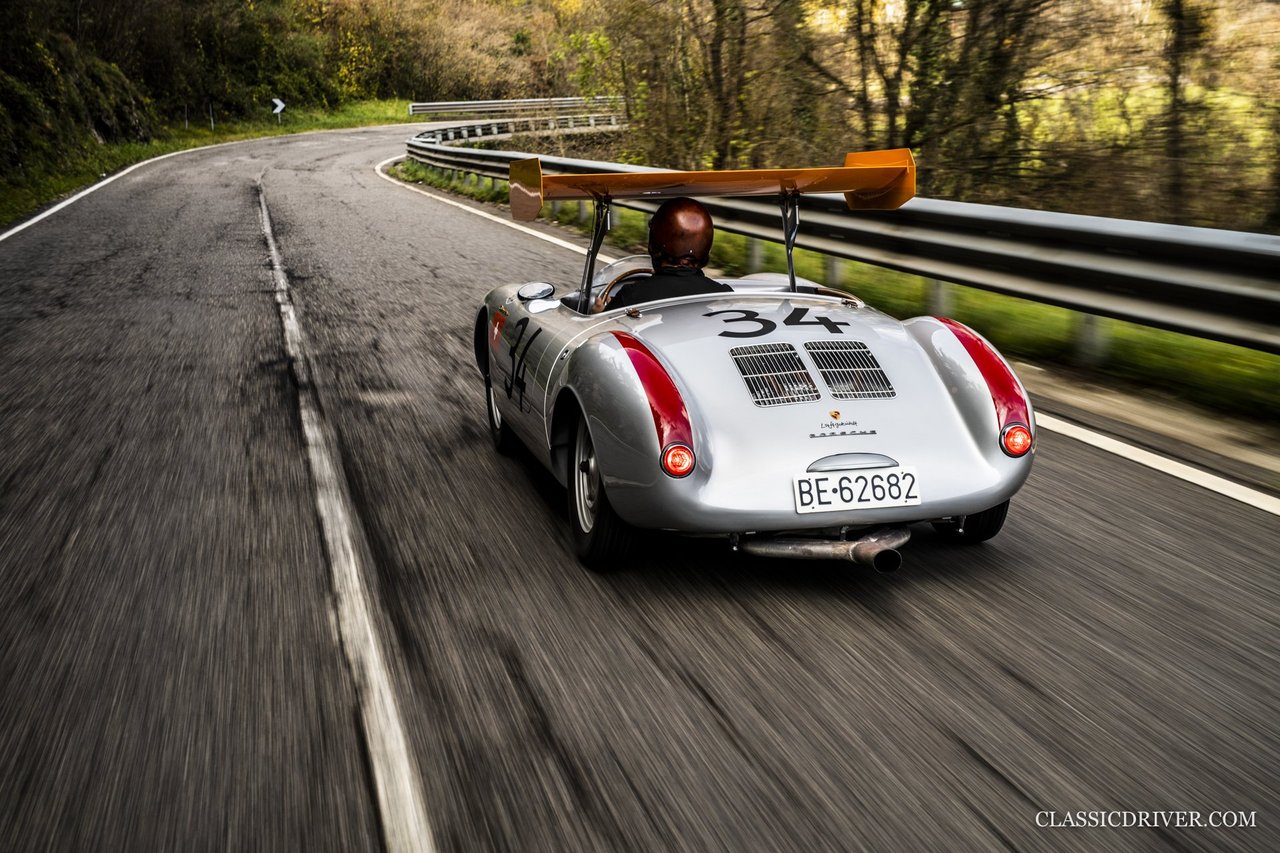
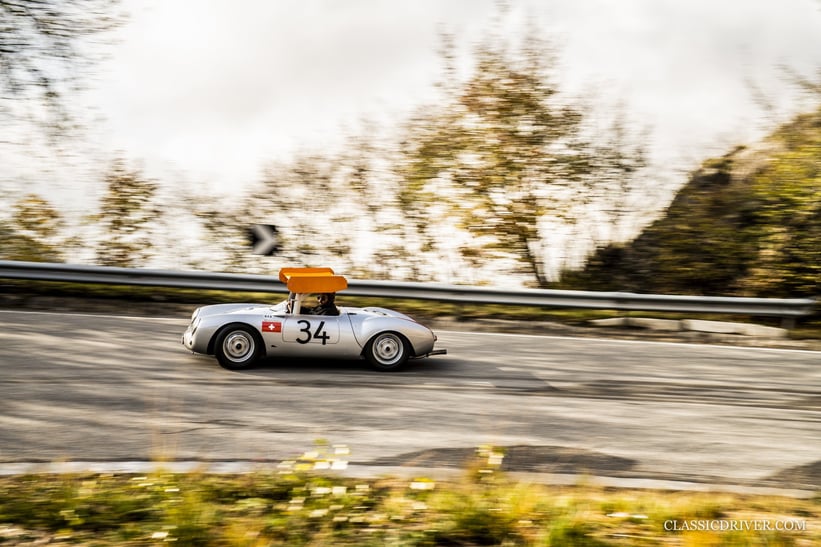
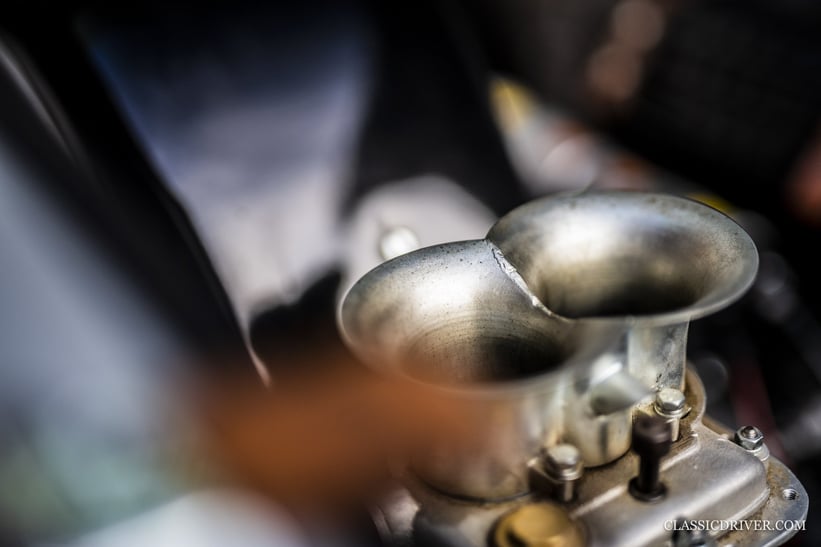
And the wing wasn’t fixed – a lever in the cockpit could change its angle of attack by up to 17 degrees while on the move, resulting in higher top speeds on the straights and more downforce in the corners. The drag-reducing endplates, which had not even appeared on commercial aircraft by that point, were the proverbial cherry on the cake. At 93mph, the downforce generated was reportedly equal to the weight of the car.
Porsche’s racing director Huschke von Hanstein was as peeved with May’s pace as he was perplexed by exactly what the aerofoil was doing to help find it. A complaint was promptly lodged with the race organisers, Von Hanstein claiming that the giant device not only hindered the visibility of the other drivers but also potentially posed a lethal threat to the spectators in the event of an accident. They conceded and May was forced to remove it. With its wing clipped, the Porsche stood no chance.
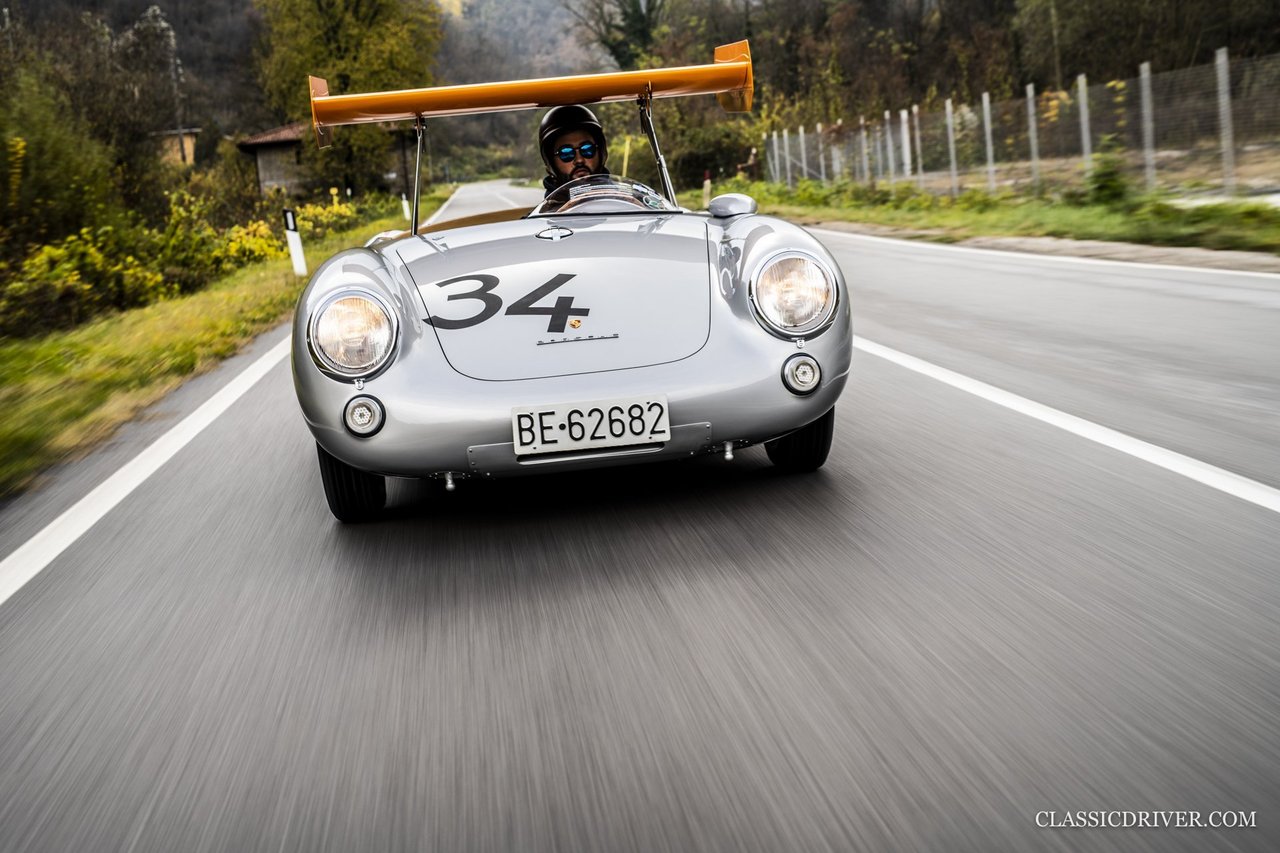
While the car never raced competitively with its wing fitted again, May’s ingenious invention pioneered an innovation that would come to be embraced by the likes of Jim Chaparral, Colin Chapman and Bruce McLaren more than a decade later and, ultimately, change the face of motorsport forever.
And by no means was this the only contribution this forward-thinking engineer made to the sport he so adored. Using the knowledge he had gleaned from working at Daimler-Benz, May helped both Porsche and Ferrari introduce fuel injection systems and later developed the special high-compression ‘Fireball’ cylinder head for Jaguar.
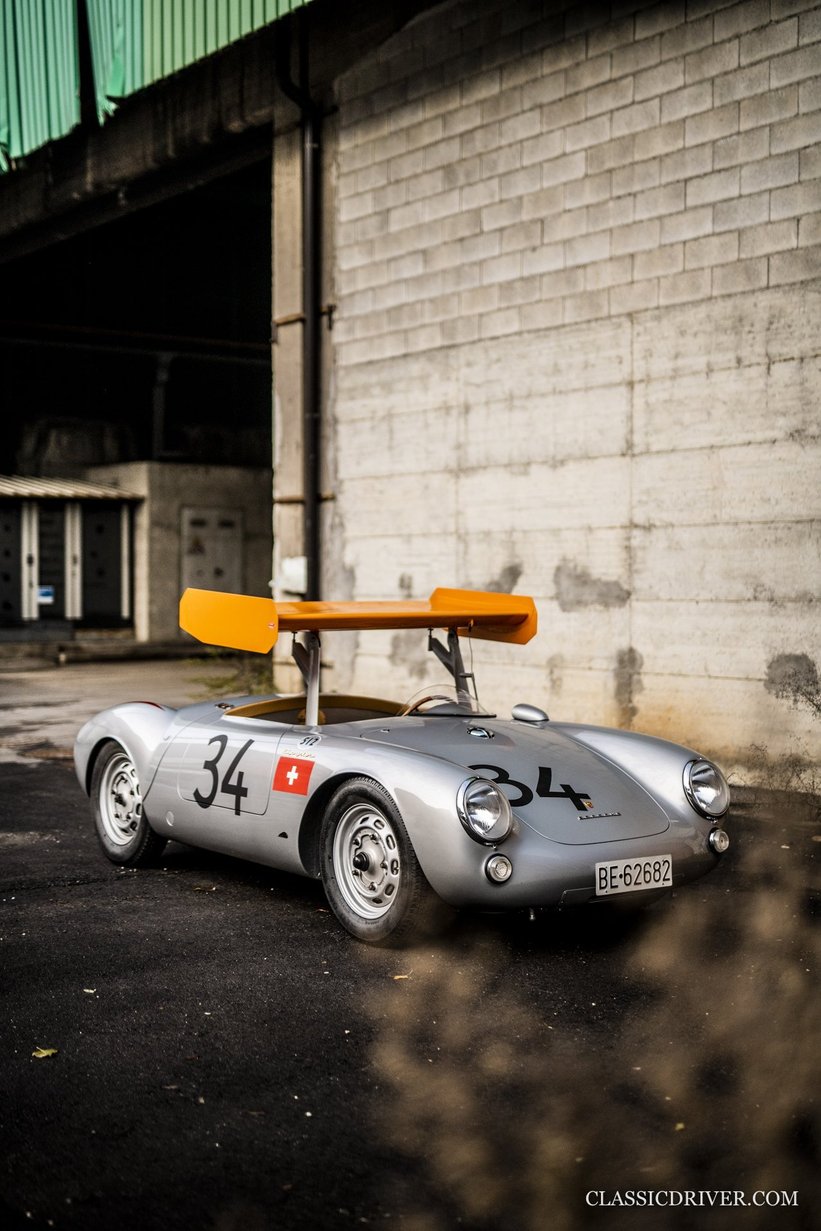
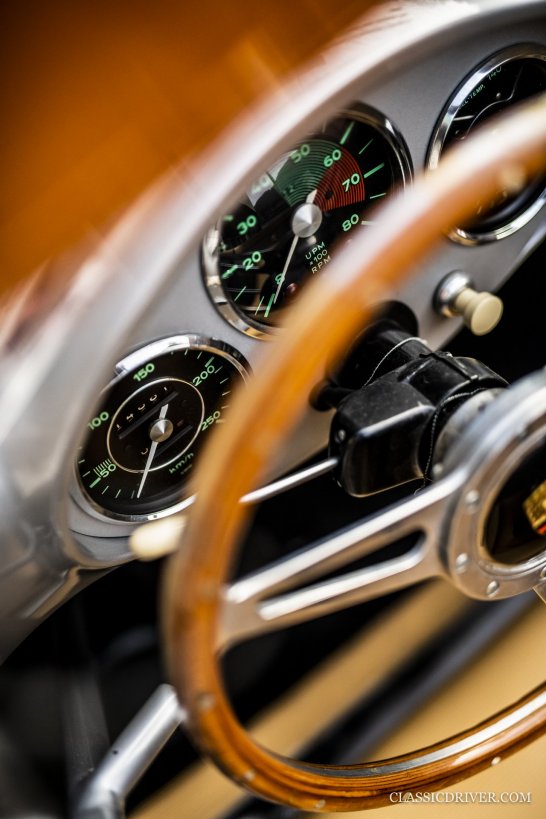
He was certainly no slouch behind the wheel, either – May won the 1959 International Formula Junior championship with ease, which led to a drive in Formula 1 with the small German privateer outfit Scuderia Colonia, although his racing days were sadly curtailed by an accident during practice for the 1961 German Grand Prix.
So, whatever happened to May’s visionary Porsche 550 Spyder, which he’d originally purchased after sweettalking his banker brother Pierre into contributing towards its cost? Well, bizarrely for what was once a redundant racing car, it survives in grade-A condition to this day. It has recently been comprehensively restored in Padua to the exact specification devised by Michael May, who consulted and signed off on the restoration with great enthusiasm despite his 82 years.
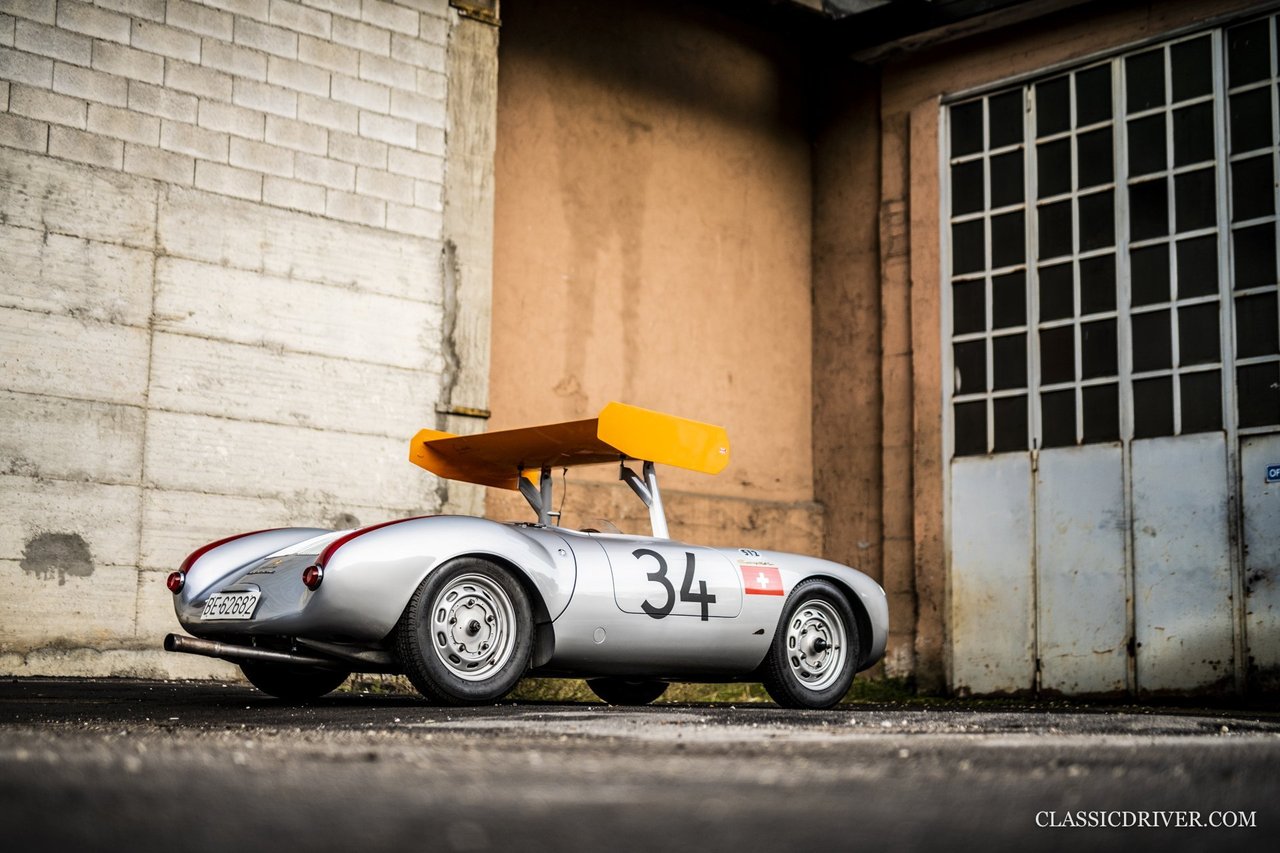
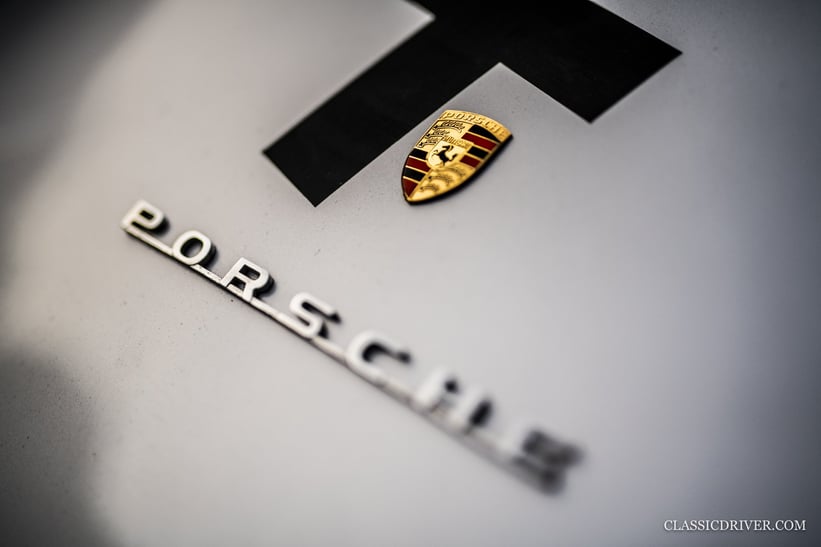
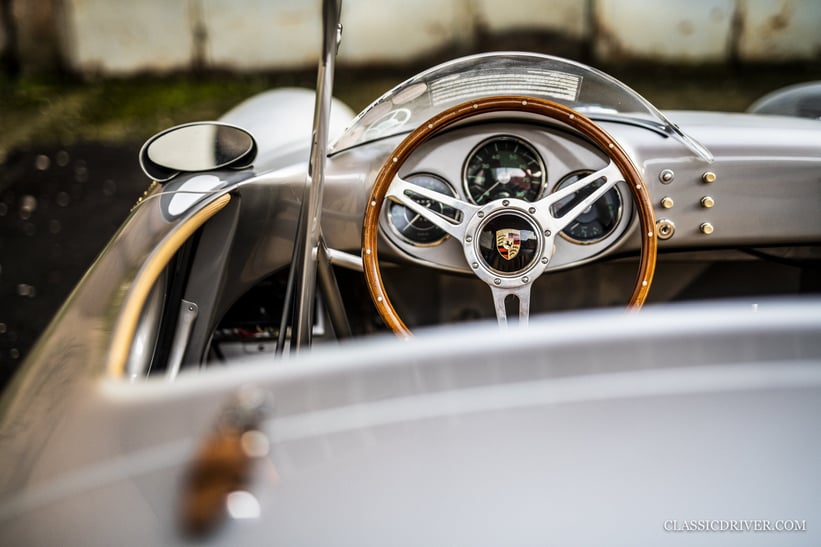
Thanks to its significance as the world’s first racing car fitted with a manipulated elevated aerofoil, chassis 550-031 has featured prominently at the world’s most prestigious events in recent years, from the Pebble Beach Concours d’Elegance in California and the Mille Miglia in Italy to the Goodwood Festival of Speed and Salon Privé in the UK. And it’s made every bit as much of a stir on each occasion as it did when it arrived on a flatbed trailer at the Nürburgring back in 1956.

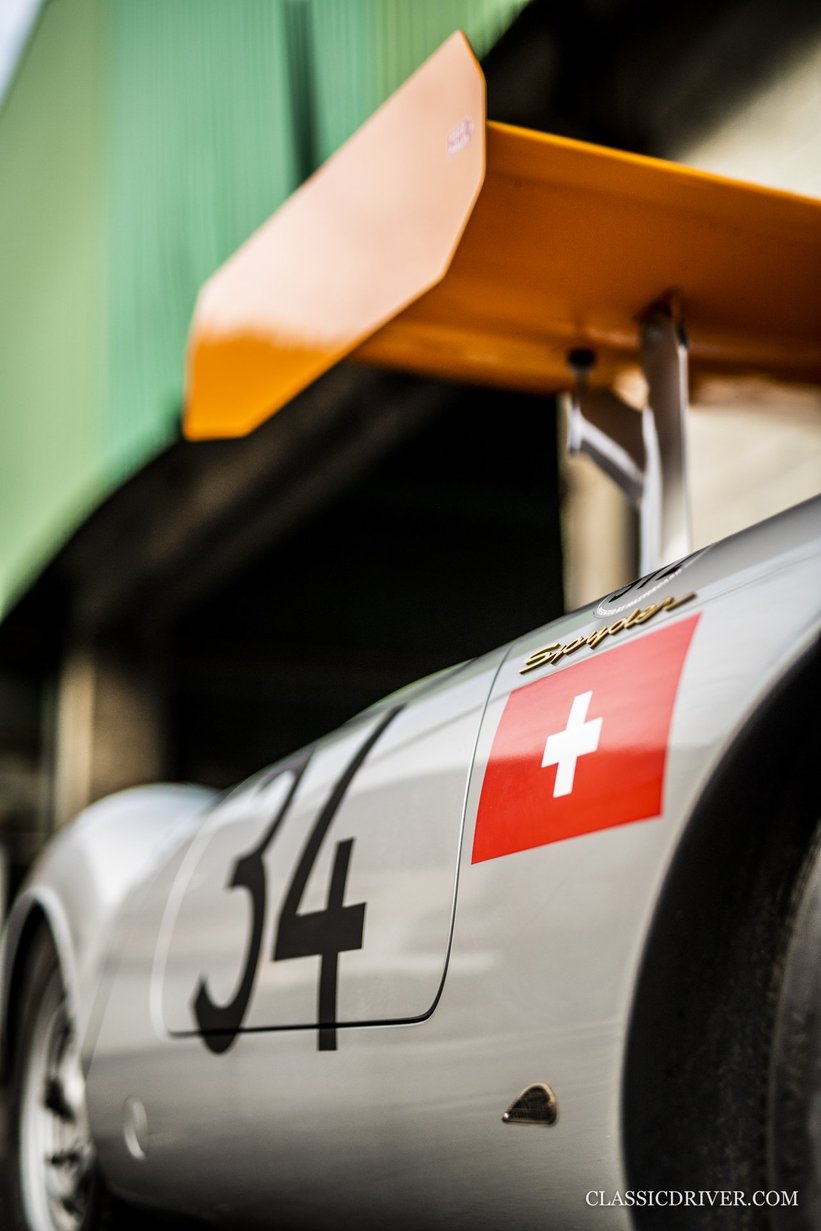
We’ve got the bewinged wonder all to ourselves today, though, and it feels very appropriate to be soaring through the clouds high in the Italian mountains. From our tracking vehicle ahead of the small open prototype, you can really see the aerofoil working to increase the stability and balance. Above all, the winged warrior stands as a testament to the ingenuity of Michael May, a man who deserves to be more widely credited as the original pioneer of automotive aerodynamics.
Photos: Rémi Dargegen © 2020
